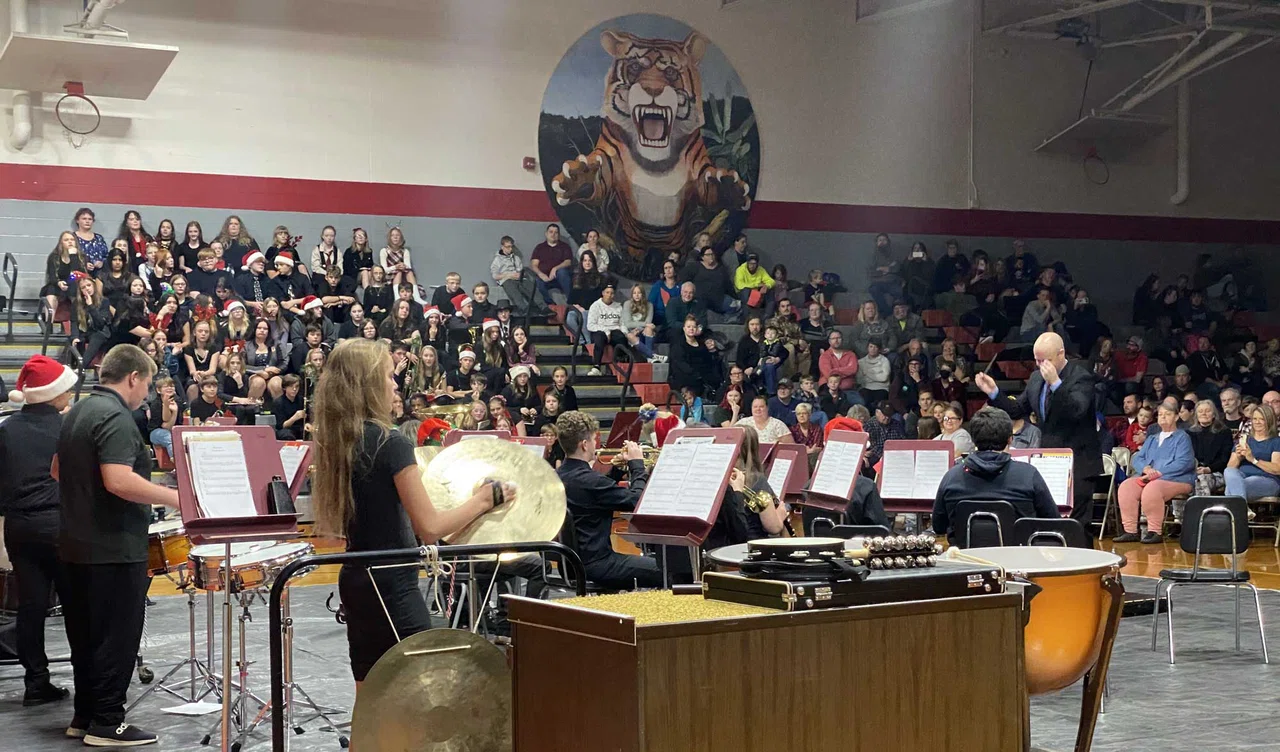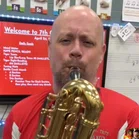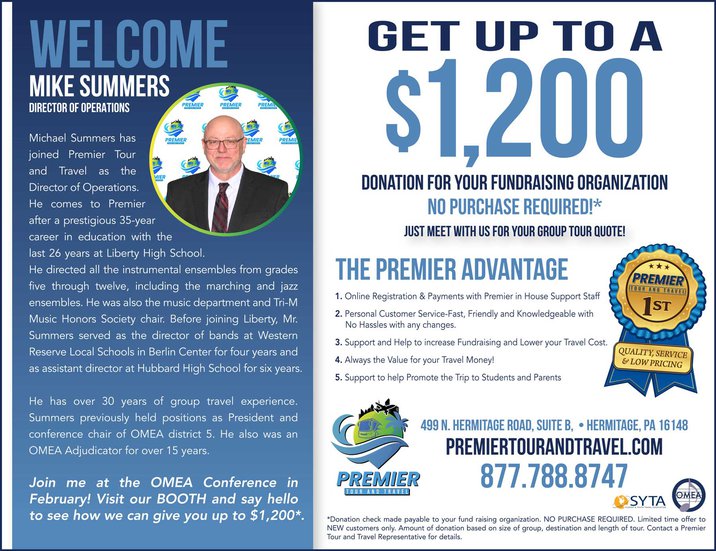©2025 Ohio Music Education Association



Sound Strategies
Going Viral with Purpose: A Music Educator's Guide to Responsible Social Media Usage
Going Viral with Purpose: A Music Educator's Guide to Responsible Social Media Usage
Paul Glader

TikTok. It all started with that—something I feared, rolled my eyes at, and resisted. That all changed in 2022. Spurred on by students in my music program at Bethel-Tate Middle School, I cautiously entered the social media fray. What began as a reluctant step into social media became a launchpad for growth, advocacy, and connection that has benefited my students, school, and community—and, yes, me.
How It Began
How It Began
Before TikTok, I was already using Facebook and Twitter through our district’s official channels to share positive updates about our program. If you’re not yet using social media professionally, this is a great starting point. District-run accounts offer an added layer of protection and help highlight your program’s impact. I also suggest researching which platforms your community uses most and tailoring your outreach accordingly.
Reaching students, however, required a different strategy. It was made clear to me in 2022 that TikTok was the platform of choice. Since our school didn’t have a TikTok page, I approached my principal, gained approval, and launched a page under @DarthGlader. From that single handle, my social presence grew to nearly 250,000 followers across YouTube, TikTok, Instagram, and Facebook.
But I didn’t start with all four—just one. Begin at your own pace. Whether through a school-run page or a program-specific account, once you start, you’ll figure out what works for you and grow from there.
Following Trends
Following Trends
One of the fastest ways I built engagement was through trends. While TikTok is often associated with dance challenges, it offers much more—sports, education, music, humor, niche interests. By following trends and creating student-friendly content, we grew our visibility.
Sometimes I rely on students to clue me into what’s trending. One sixth grader showed me a viral saxophone meme—I recorded my version, and it reached nearly 10 million views. That wouldn’t have happened without student input.
Another standout example: my choir students found a trend involving solfege and a filter that reacted to in-tune singing. They pitched the idea, rehearsed together, and recorded the video. That clip? Over 100 million views. The pride and excitement they felt created a memorable and meaningful musical experience.
Student Involvement
Student Involvement
Bringing students into the content creation process builds engagement and ownership. If a goofy warmup is their idea, the buy-in is already there. They understand trends, and their creativity helps extend your reach far beyond the classroom.
The solfege video was more than a viral moment—it was a learning opportunity and a community-building experience. Projects like this boost recruitment, retention, and program visibility. Students love seeing their ideas come to life—and the world loves seeing them shine.
Benefits of Going Social
Benefits of Going Social
Social media has given our small, rural music program global visibility. With hundreds of millions of views and thousands of new followers, our “BT” logo is now recognized well beyond our town. This digital presence has fostered community pride, supported fundraising, and led to standing-room-only concerts.
We’ve seen measurable results, too: participation in our middle school music program has more than doubled. With over 50% of the student body involved in music, we’ve created a culture of excitement and pride. Our digital presence helps with recruiting and retention in a way that almost becomes automated. I have elementary students who see me in the hallway and say, “I follow you on YouTube” or “My mom follows you on TikTok.” It’s built-in recruitment that works passively while we continue doing what we already do.
10 Best Practice Tips
10 Best Practice Tips
Still with me? Want to join the social media realm as a music educator? Here are some of my best practice tips to help get you started:
1. Ask for permission first.
Be transparent with your administration. If you’re denied permission, don’t move forward—advocate respectfully and look for alternative ways to highlight your program in the meantime.
2. Define your purpose.
Is this account about you, your program, or both? Will it include performances, warmups, skits, or teaching moments? Be ready to articulate your goals.
3. Separate personal and professional.
Don’t mix your personal social media accounts with school-related pages. Keep your work-focused content strictly professional.
4. Know your school’s social media policy.
Rules vary by district and state. It’s your responsibility to understand them and stay compliant.
5. Add safeguards.
I created a social media waiver for families, reviewed and approved by our district lawyer. It clarifies that I don’t monetize any content involving students and ensures transparency.
6. Set your own guidelines.
Decide what’s appropriate to post, how student faces are handled, when you record, and whether to allow comments. Share your rules with the administration.
7. Don’t post in the moment.
Create drafts, reflect, and post later. Just like you wouldn’t reply to an emotional email right away, it’s best to evaluate a post before it goes live.
8. Monitor comments.
If the post involves students, monitoring comments is a must. On some platforms, you can turn them off altogether. Be proactive in protecting your students.
9. Understand monetization boundaries.
Some platforms offer monetization based on followers. I created two accounts—one for student involvement (non-monetized) and one for off-hours content (monetized with full district approval).
10. Have fun and stay flexible.
These practices might sound like a lot, but they’re manageable. As platforms evolve, so should your approach. Stay adaptable and continue learning.
Final Thoughts
Final Thoughts
Using social media thoughtfully has energized my students, strengthened our program, and connected us with audiences worldwide. It’s fun. It’s effective. And it’s a powerful tool to shine a light on the great things already happening in your classroom. Let the world see the joy, creativity, and excellence your students bring to life every day.

Paul Glader is the Director of Bands and Choirs at Bethel-Tate Middle School in Bethel, Ohio, where he teaches students in grades 5–8. Now in his 16th year of teaching, Mr. Glader holds both a Bachelor of Music in Music Education and a Master of Music Education from the University of Cincinnati College-Conservatory of Music (CCM). The school’s music program has been recognized with the NAMM Foundation’s SupportMusic Merit Award for three consecutive years (2023–2025) and was honored with the 2024 Music for All “Advocacy in Action” Award. Mr. Glader was named a 2025 Yamaha “40 Under 40” Music Educator, a quarterfinalist for the 2026 GRAMMY Music Educator Award, and he received the Cincinnati Symphony Orchestra Music Educator Award in 2022.




